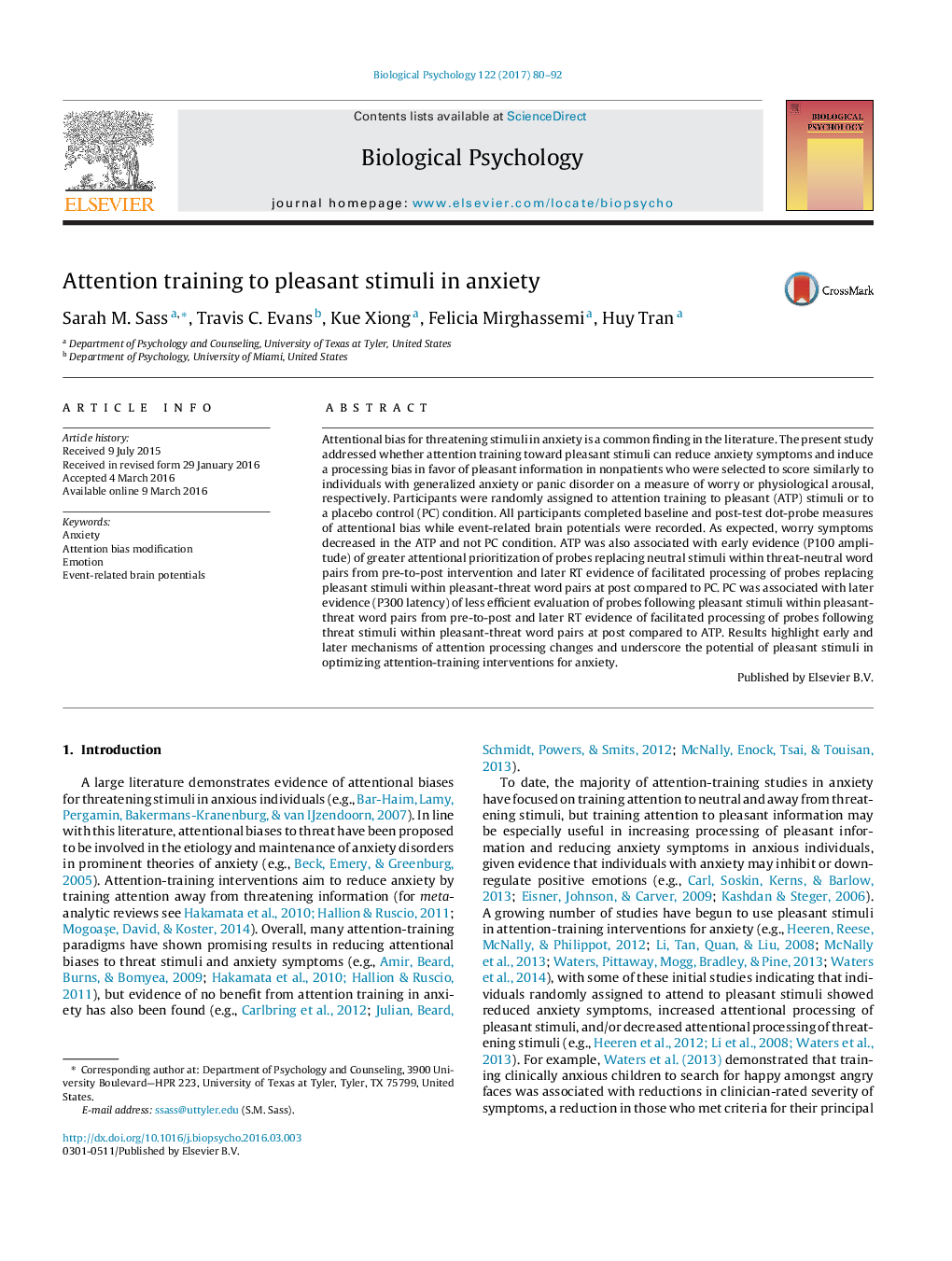| Article ID | Journal | Published Year | Pages | File Type |
|---|---|---|---|---|
| 5040511 | Biological Psychology | 2017 | 13 Pages |
â¢Attention training to pleasant (ATP) stimuli may help alleviate anxiety.â¢ATP is understudied in samples with high levels of worry and anxious arousal.â¢ATP was associated with decreased worry and early and later attention changes.â¢Placebo was associated with decreased efficiency in processing pleasant stimuli.â¢Results highlight potential of pleasant stimuli in attention training in anxiety.
Attentional bias for threatening stimuli in anxiety is a common finding in the literature. The present study addressed whether attention training toward pleasant stimuli can reduce anxiety symptoms and induce a processing bias in favor of pleasant information in nonpatients who were selected to score similarly to individuals with generalized anxiety or panic disorder on a measure of worry or physiological arousal, respectively. Participants were randomly assigned to attention training to pleasant (ATP) stimuli or to a placebo control (PC) condition. All participants completed baseline and post-test dot-probe measures of attentional bias while event-related brain potentials were recorded. As expected, worry symptoms decreased in the ATP and not PC condition. ATP was also associated with early evidence (P100 amplitude) of greater attentional prioritization of probes replacing neutral stimuli within threat-neutral word pairs from pre-to-post intervention and later RT evidence of facilitated processing of probes replacing pleasant stimuli within pleasant-threat word pairs at post compared to PC. PC was associated with later evidence (P300 latency) of less efficient evaluation of probes following pleasant stimuli within pleasant-threat word pairs from pre-to-post and later RT evidence of facilitated processing of probes following threat stimuli within pleasant-threat word pairs at post compared to ATP. Results highlight early and later mechanisms of attention processing changes and underscore the potential of pleasant stimuli in optimizing attention-training interventions for anxiety.
